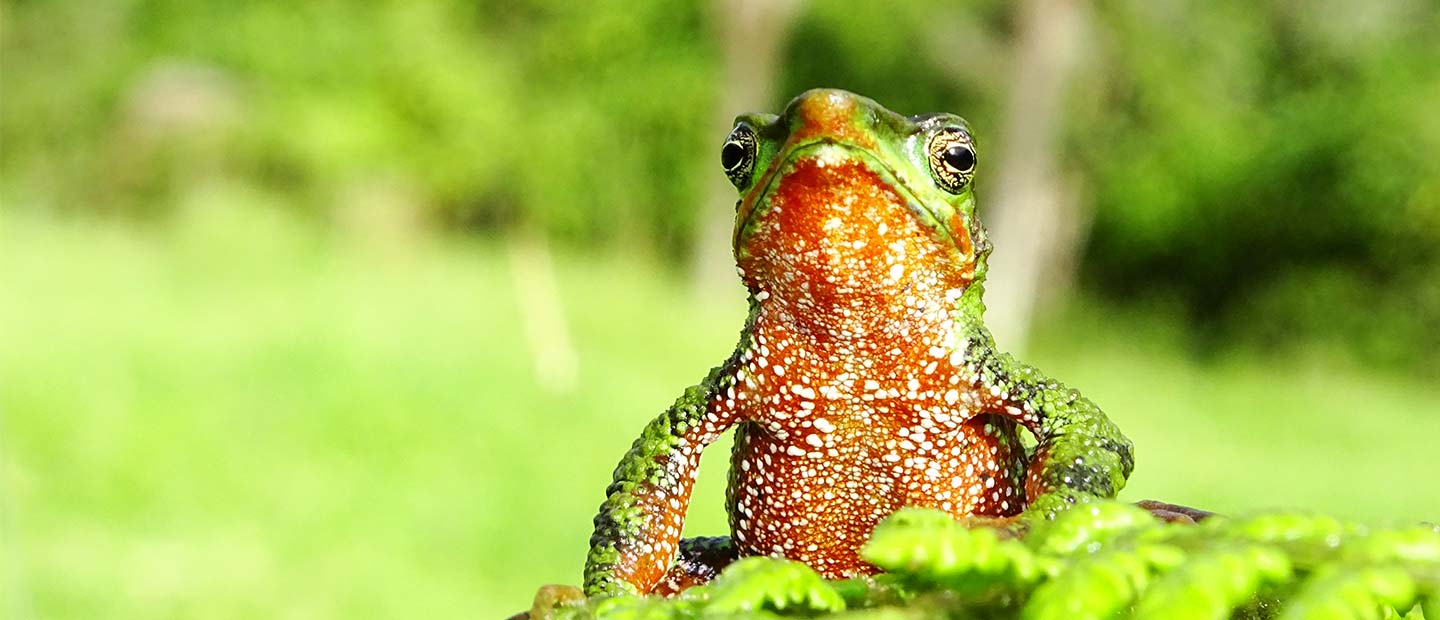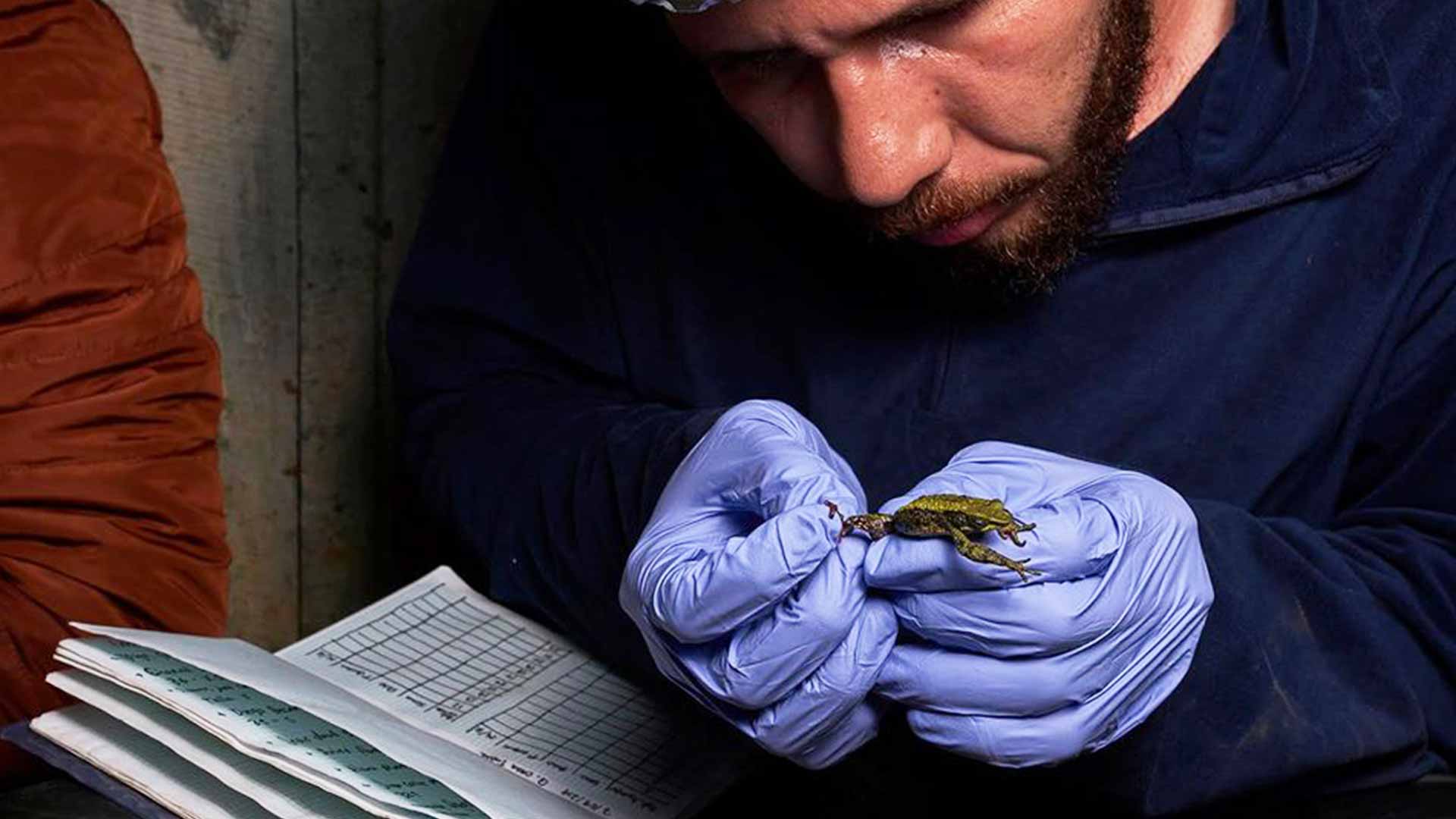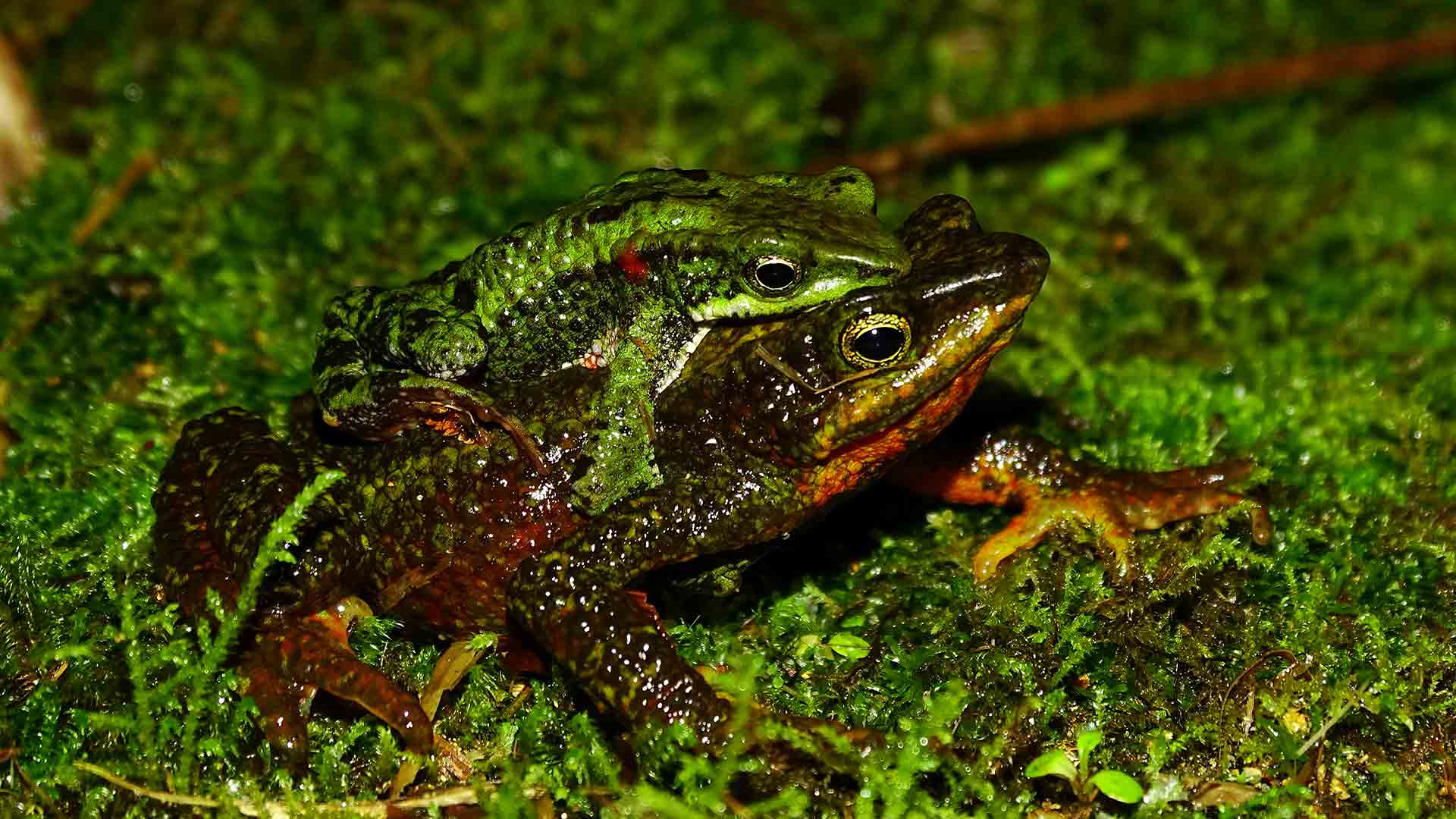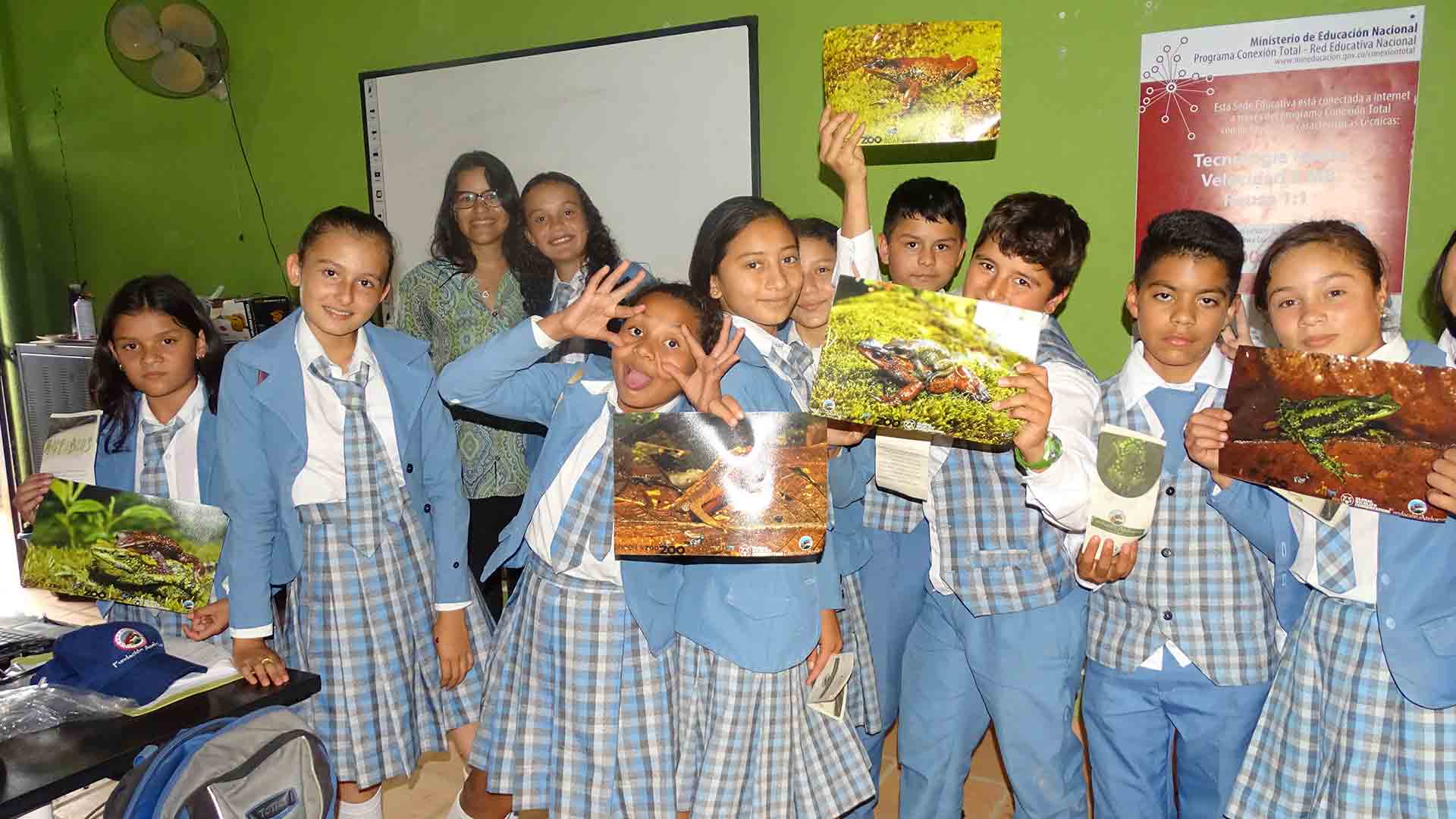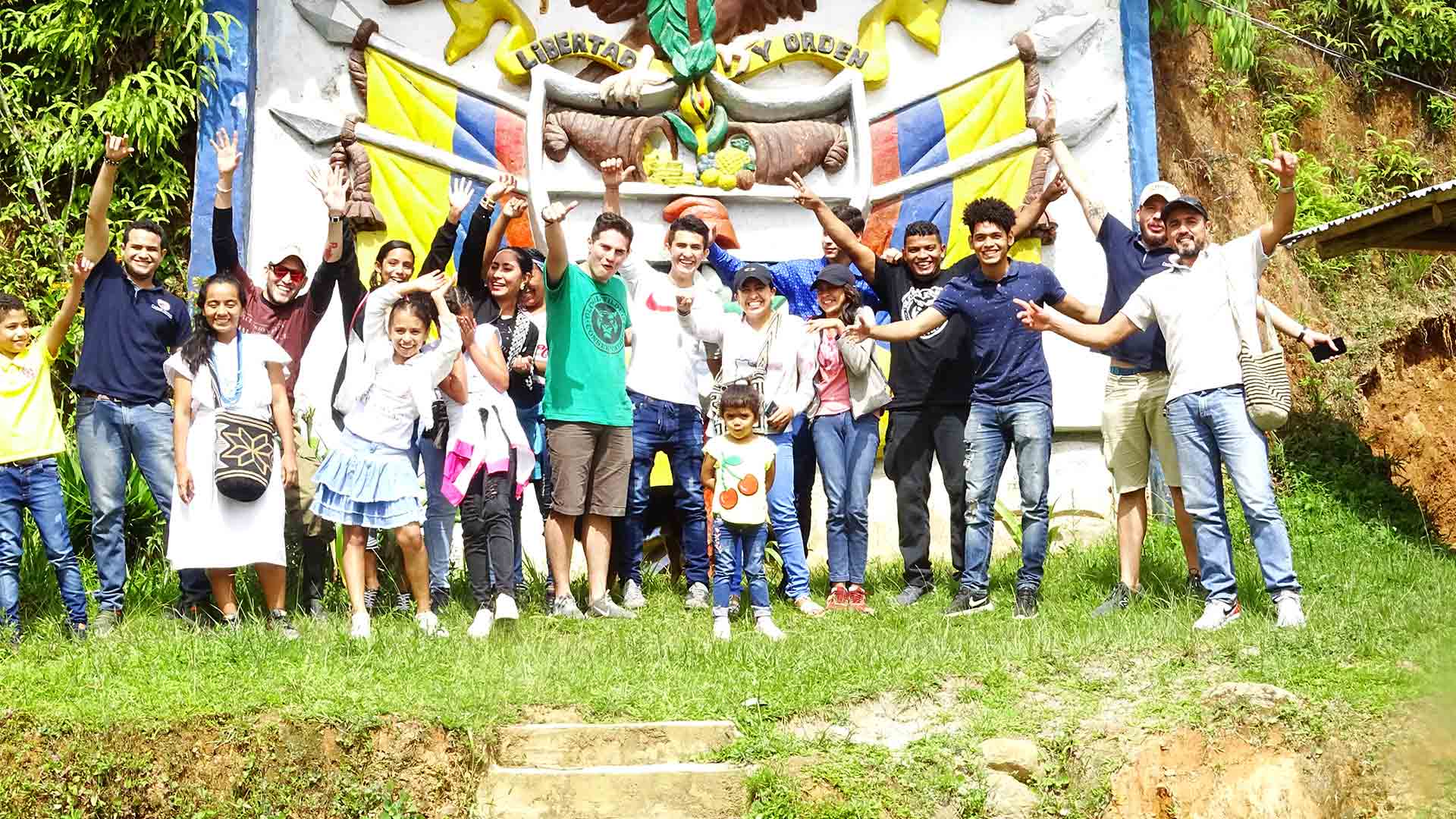Bringing colour to the montane rainforests they inhabit each breeding season, harlequin toads (Atelopus) are a beautifully varied and special genus of just under 100 closely related amphibians that are naturally found across the neotropics, from Costa Rica to Bolivia – and they’re in need of help.
Atelopus species are small (the smallest species is 2.5cm long and the largest is just over 6cm), primarily brightly coloured, and diurnal - which means they’re most active during the day, like us humans. Sadly, these toads are the most threatened group of amphibians in the world and 80% of the 96 harlequin toad species that have been formally described (there may be more that are currently unknown to scientists, waiting to be discovered) are classed as endangered or critically endangered, with two species now extinct.
Since 2008 Fundacion Atelopus – a foundation dedicated to the protection of amphibians and reptiles in Colombia - has been leading conservation research and awareness for two high altitude Atelopus species (A. nahumae and A. laetissimus) that live within Colombia’s Sierra Nevada de Santa Marta mountain range (SNSM). Through the Auckland Zoo Conservation Fund’s Small Grants Programme we were able to provide vital funding towards their most recent conservation project, helping experts and the local community to better understand and protect harlequin toads in the region.


